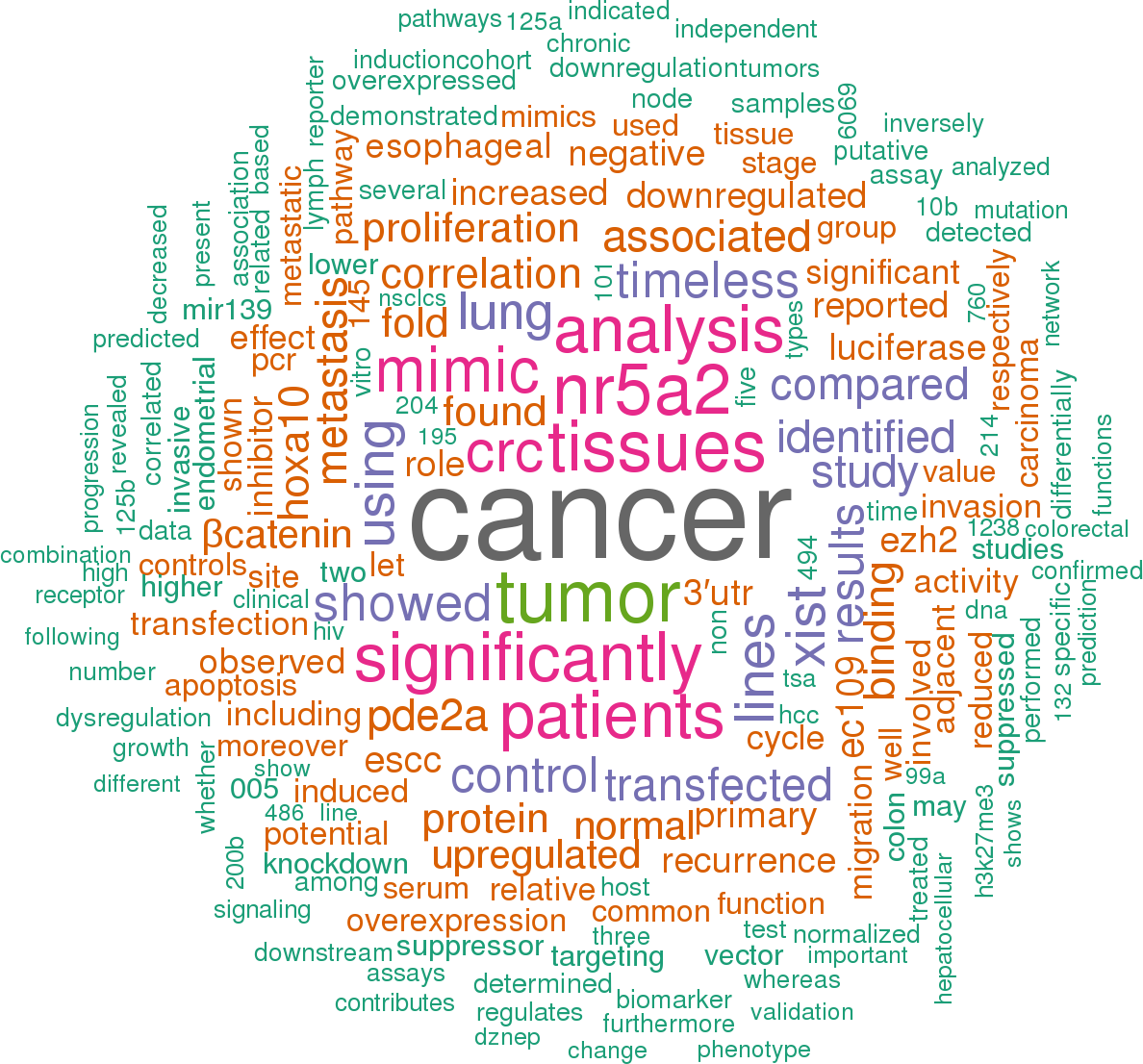Accession
MI0000261
Symbol
HGNC:
MIR139
Description
Homo sapiens
hsa-mir-139 precursor miRNA mir-139
Gene
family?
family?
RF00703;
mir-139
Summary
Caution, this is an AI generated summary based on literature. This may have errors. ?
MIR139 is recognized as a microRNA with tumor suppressor activity in acute myeloid leukemia (AML) [PMC8885418]. This microRNA has been linked to specific targets that are believed to mediate its suppressive functions in the context of AML [PMC8885418]. In the plant species cucumber, homologous genes to those targeted by MIR139 in AML have been identified, including CsTCP27, CsTCP25, CsTCP14, and CsTCP12 [PMC7709023]. However, it should be noted that the well-matched coding regions of these cucumber genes suggest they might be potential targets of miR319, not MIR139, which may indicate a typographical error in the original text [PMC7709023]. The identification of these targets is significant as it provides insight into the evolutionary conservation and functional roles of microRNAs across different species [PMC7709023].
Literature search

116 open access papers mention hsa-mir-139
(670 sentences)
(670 sentences)
Sequence
70528
reads,
229
reads per million, 132 experiments
guguauUCUACAGUGCACGUGUCUCCAGUguggcucggaggcUGGAGACGCGGCCCUGUUGGAGUaac
...((((((((((.((.((((((((((((.(.......).)))))))))))))).))).)))))))..
...((((((((((.((.((((((((((((.(.......).)))))))))))))).))).)))))))..
Structure
gug - U A g gg uauUCUA CAG GC CGUGUCUCCAGU u c ||||||| ||| || |||||||||||| | u aUGAGGU GUC CG GCGCAGAGGUcg a c -ca U C - g gg
Annotation confidence
High
Do you think this miRNA is real?
Comments
The mature sequence shown here represents the most commonly cloned form from large-scale cloning studies [2].
Genome context
chr11: 72615063-72615130 [-]
Disease association
hsa-mir-139 is associated with one or more human diseases in the Human microRNA Disease Database
| Disease | Description | Category | PubMed ID |
|---|
Mature hsa-miR-139-5p
| Accession | MIMAT0000250 |
| Description | Homo sapiens hsa-miR-139-5p mature miRNA |
| Sequence | 7 - UCUACAGUGCACGUGUCUCCAGU - 29 |
| Evidence |
experimental
cloned [2] |
| Database links |



|
| Predicted targets |



|
Mature hsa-miR-139-3p
| Accession | MIMAT0004552 |
| Description | Homo sapiens hsa-miR-139-3p mature miRNA |
| Sequence | 43 - UGGAGACGCGGCCCUGUUGGAGU - 65 |
| Evidence |
experimental
cloned [2] |
| Database links |



|
| Predicted targets |



|
References
|



